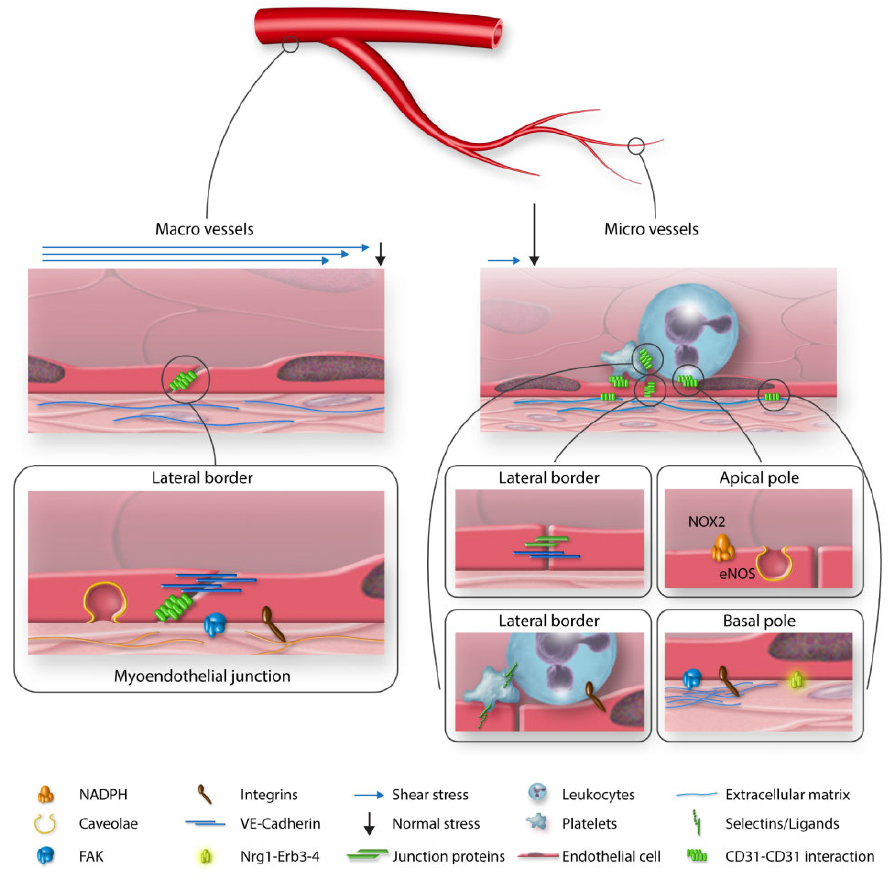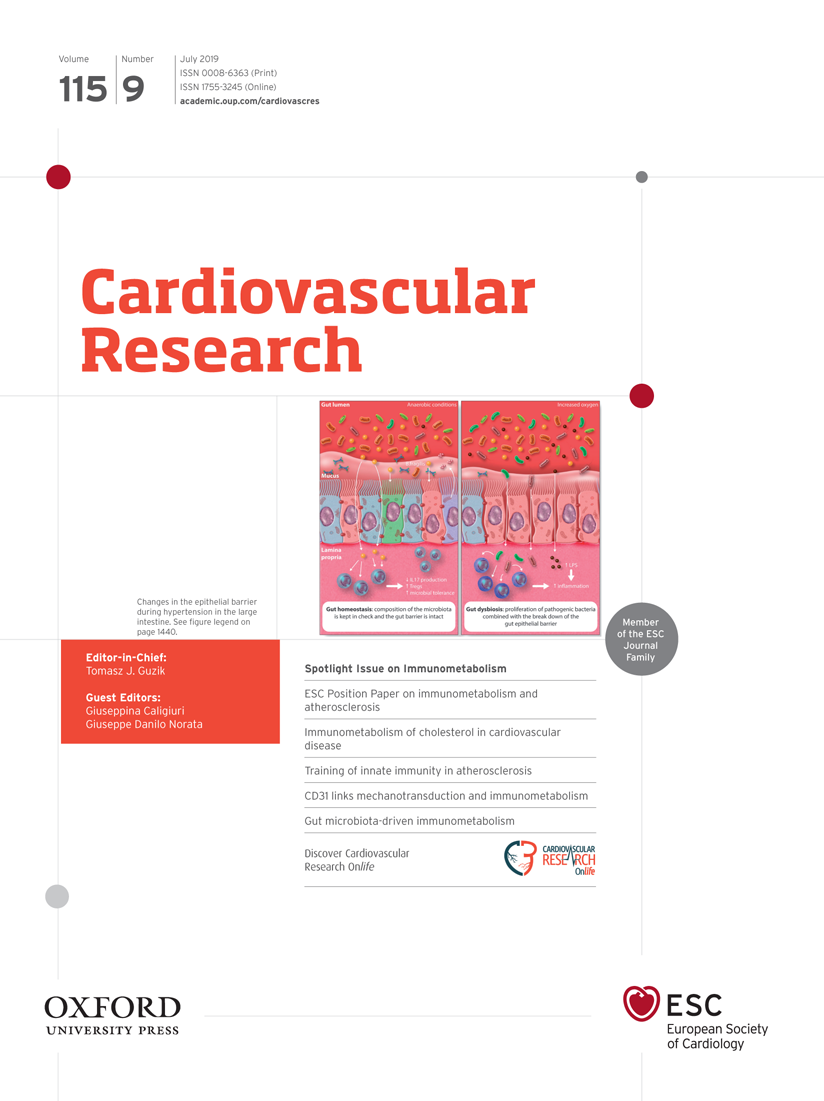Mechanotransduction, immunoregulation, and metabolic functions of CD31 in cardiovascular pathophysiology
Caligiuri G
2019 • Cardiovasc Res • [pdf]
 Biomechanical changes in the heart and vessels drive rapid and dynamic regulation of blood flow, a vital process for meeting the changing metabolic needs of the peripheral tissues at any given point in time. The fluid movement of the blood exerts haemodynamic stress upon the solid elements of the cardiovascular system: the heart, vessels, and cellular components of the blood. Cardiovascular diseases can lead to prolonged mechanical stress, such as cardiac remodelling during heart failure or vascular stiffening in atherosclerosis. This can lead to a significantly reduced or increasingly turbulent blood supply, inducing a shift in cellular metabolism that, amongst other effects, can trigger the release of reactive oxygen species and initiate a self-perpetuating cycle of inflammation and oxidative stress. CD31 is the most abundant constitutive co-signalling receptor glycoprotein on endothelial cells, which line the cardiovascular system and form the first-line of cellular contact with the blood. By associating with most endothelial receptors involved in mechanosensing, CD31 regulates the response to biomechanical stimuli. In addition, by relocating in the lipid rafts of endothelial cells as well as of cells stably interacting with the endothelium, including leucocytes and platelets, CD31-CD31 trans-homophilic engagement guides and restrains platelet and immune cell accumulation and activation and at sites of damage. In this way, CD31 is at the centre of mediating mechanical, metabolic, and immunological changes within the circulation and provides a single target that may have pleiotropic beneficial effects.
Biomechanical changes in the heart and vessels drive rapid and dynamic regulation of blood flow, a vital process for meeting the changing metabolic needs of the peripheral tissues at any given point in time. The fluid movement of the blood exerts haemodynamic stress upon the solid elements of the cardiovascular system: the heart, vessels, and cellular components of the blood. Cardiovascular diseases can lead to prolonged mechanical stress, such as cardiac remodelling during heart failure or vascular stiffening in atherosclerosis. This can lead to a significantly reduced or increasingly turbulent blood supply, inducing a shift in cellular metabolism that, amongst other effects, can trigger the release of reactive oxygen species and initiate a self-perpetuating cycle of inflammation and oxidative stress. CD31 is the most abundant constitutive co-signalling receptor glycoprotein on endothelial cells, which line the cardiovascular system and form the first-line of cellular contact with the blood. By associating with most endothelial receptors involved in mechanosensing, CD31 regulates the response to biomechanical stimuli. In addition, by relocating in the lipid rafts of endothelial cells as well as of cells stably interacting with the endothelium, including leucocytes and platelets, CD31-CD31 trans-homophilic engagement guides and restrains platelet and immune cell accumulation and activation and at sites of damage. In this way, CD31 is at the centre of mediating mechanical, metabolic, and immunological changes within the circulation and provides a single target that may have pleiotropic beneficial effects.

